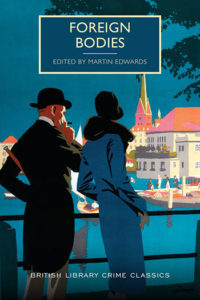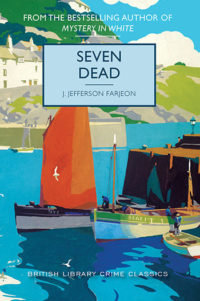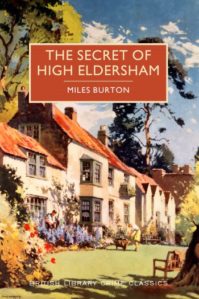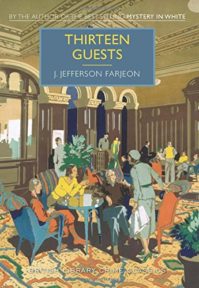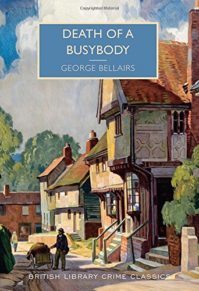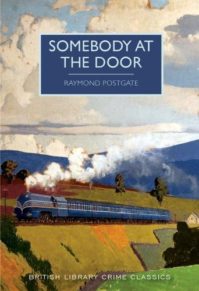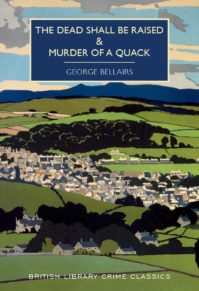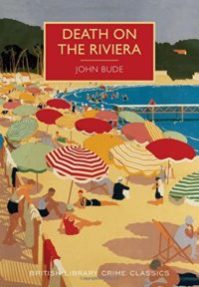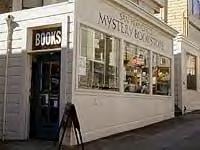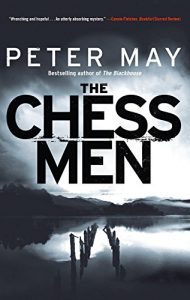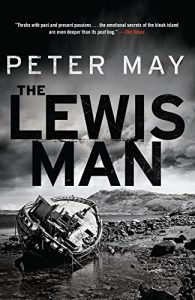The Little Stranger by Sarah Waters
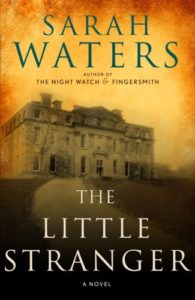 The Little Stranger was a deliciously creepy Halloween read which kept me up well into several October nights — but I’m only now getting around to this review. Pretend it’s Halloween, which was only a few weeks ago.
The Little Stranger was a deliciously creepy Halloween read which kept me up well into several October nights — but I’m only now getting around to this review. Pretend it’s Halloween, which was only a few weeks ago.
It’s post-war Warwickshire, England and Dr. Faraday has been called to Hundreds Hall, the Ayres family mansion. The doctor was here before, as a child, accompanying his mother, a housemaid for the family. As a child he was entranced with the hall’s decorative wall panels and he secretly pried loose and pocketed a carved walnut.
Now it’s thirty years later and Hundreds Hall has lost former grandeur. In amongst leaky ceilings and musty carpets lives the Ayres family: Mrs. Ayres, a widow who longs for the old days of her family glory; her son, Roderick, a veteran who is still suffering both physically and mentally from the war, and his sister, Caroline, a young woman who desires a life of her own.
But the most important character is Hundreds Hall — the author spends pages (and pages) describing the crumbling and dilapidated mansion. This provides an eerie backdrop for presenting a family tormented by the past.
[When] I stepped into the hall the cheerlessness of it struck me at once. Some of the bulbs in the wall-lights had blown, and the staircase climbed into shadows. A few ancient radiators were bubbling and ticking away, but their heat was lost as soon as it rose. I went along the marble-floored passage and found the family gathered in the little parlour, their chairs drawn right up to the hearth in their efforts to keep warm.
The Ayres are stuck between the pre-war world and the post war one. But, as we discover, they are also stuck between this world and one inhabited by spirits and secrets.
Yes, the house is haunted — mysterious writing appears on the walls, there are unexplained small fires, unexpectedly locked rooms, and creepy noises through the antiquated pipes. Roderick succumbs to his demons (and the house’s) and is sent away to an institution. Carolyn struggles to maintain some sense of normalcy in the highly abnormal Hundreds Hall and Mrs. Ayres begins to go mad.
At the center is Dr. Faraday, attending each family member as best he can but also striving to get to the bottom of the frightening incidents at Hundreds Hall. Despite his lower class upbringing, Dr. Faraday not only becomes the family doctor, but also a trusted friend, and eventually, Caroline’s fiancée.
The prose beautifully builds a chilling atmosphere and a looming sense of dread. More eerie than scary. Slow and languid but at the same time, exciting and suspenseful. Although the novel could have benefited from some major editing, I was totally invested — reading on and on, even when I got slightly spooked — hearing things go bump in the night.
Some readers said there is no resolution – no ending. However, by re-reading several key scenes and the last few pages — I figured out who is the little stranger and had goosebumps along the way.
The Little Stranger is not at all like some of today’s merely adequately written thrillers, whose readers only require a ‘page turner’. This novel is slow, subtle, literate and requires a little more thought — a thinking reader’s thriller.
Once again, they’ve made a film from a book I’ve just read. It looks properly creepy and atmospheric.
Trailer HERE
In a Dark, Dark Wood by Ruth Ware
Remember the old, creepy nursery rhyme?
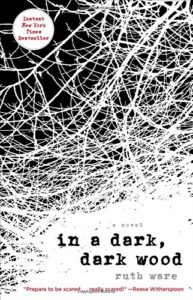 In the dark, dark wood, There was a dark, dark house.
In the dark, dark wood, There was a dark, dark house.
And in the dark, dark house, there was a dark, dark room.
And in the dark, dark room, There was a dark, dark cupboard.
And in the dark, dark cupboard, There was a dark dark shelf.
And on the dark, dark shelf, There was a dark, dark box.
And in the dark, dark box, there was a big white ghost!
With this rhyme as it’s preface, I knew this book was going to be scary and — well — dark. I saved In a Dark, Dark Wood for the plane home from Europe. Turns out it was the perfect antidote for the mind-numbing flight. Here’s the blurb from the book:
When reclusive writer Leonora (Nora) is invited to a hen party (British for bachelorette party) in an eerie glass house deep in the English countryside, she reluctantly agrees to make the trip. But as the first night falls, revelations unfold among friends old and new and a haunting realization creeps in—they are not alone in the woods.
Forty-eight hours later, Nora wakes up in a hospital bed injured but alive, with the knowledge that someone is dead. Wondering not “what happened?” but “what have I done?” she tries to piece together the events of the past weekend. Working to uncover secrets, reveal motives, and find answers, Nora must revisit parts of herself that she would much rather leave buried where they belong: in the past.
Creepy and yes, dark — this is pure thriller enjoyment — complete with an Agatha Christie-ish limited list of suspects, much Gothic foreshadowing, and a story line that twists and turns. Like all good mysteries, the reader is challenged to piece together all the elements — who, what, where, when, how and why. I had figured out some of it, but was surprised by the final tying up of loose ends.
Ms. Ware has crafted a perfectly creepy setting — a cold, modern glass house that looks out a large forest– a “wood” which looms dark, large and menacing throughout.
The characters were engaging and the story moved at a steady, never once bored, pace. I must admit that I didn’t find the book to be the scary read promised — to me it was just creepy — which is plenty for me. (I’m still recovering from reading my one and only Stephen King novel back in my teens.) In a Dark, Dark Wood was an easy read that kept me engaged for hours.
I wasn’t a fan of Ms. Ware’s other book The Woman in Cabin 10, but this, her first novel published in 2015 — is much better.
Recommended for your summer reading list– especially if you have a long plane journey ahead of you.
And, guess what folks, Reese Witherspoon is developing In a Dark, Dark Wood it into a film.
A digital review copy was kindly provided by Gallery/Scout Press via Netgalley.
The Chinese Shawl by Patricia Wentworth
Where I have been that I’d never read any Miss Silver mysteries? Naturally, I was aware of this series and even have had one on my shelf for ages. But not until my friend (and devoted Book Barmy fan), Sally mentioned this series, did I crack open The Chinese Shawl.
But first a trip down memory lane. If you want to get right to the book you can skip this. But, you’ll miss a good story.
Let me take a moment to tell you about Sally. Sally is my mother’s best friend. They met in the 1960’s through a babysitting club where young parents on a budget exchanged free babysitting. I’ve now forgotten the nameless mothers (and sometimes fathers) who came to babysit when my parents went out. Except one — Sally, who came over in black Capri pants and a red sweater. Sally exuded Glamour with a capital G. Beautifully coiffed hair, dramatic eye makeup framing brilliant aquamarine eyes, and she smelled really good — I think it may have been Chanel No. 5. Sally brought exciting new-to-us books from her own children’s library. My little brother and I snuggled up next to this exotic creature as she read aloud.
Sally was, and still is, a cross between Elizabeth Taylor and Mary Poppins. Turns out her daughter was my age, she had a son my brother’s age and two other little ones who were my littlest sister’s age. Her husband and my father shared a love of cars and woodworking. So our families soon became close and we all grew up together in the suburbs of D. C.
To this day, Sally, my mother and I share a secret love of cozy mysteries both on TV (yes, Murder She Wrote – don’t judge) and on the written page (talking about you, Dame Agatha Christie). The other day Sally sent an email admitting she had binged watched some old Murder She Wrotes and while embarrassed, they got her out of a funk. She went on to say that she greatly admired Patricia Wentworth’s Miss Silver series on whom it is reputed Agatha Christie stole based her own Miss Marple character. I remembered my mother also admired the Miss Silver series, so I rummaged through my piles of books book collection until I found The Chinese Shawl and dove right in.
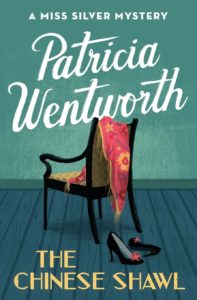 This is the story of Laura Fane, whose parents died while she was quite young and left her a historic estate called The Priory. Laura didn’t have the funds required to maintain The Priory, so was forced to lease it to her wealthy Aunt Agnes. Now that Laura has turned 21 and gained her inheritance she has come to the Priory to determine if she wants to inhabit or sell it to her Aunt Agnes and her other niece Tanis Lyle. Laura soon discovers there is family bitterness over old wounds, and this bitterness is personified most strongly by Tanis Lyle. Tanis is known for stealing other women’s boyfriends, then unceremoniously dumping them. We soon realize that Tanis has many enemies who could happily kill her. And dead she turns up.
This is the story of Laura Fane, whose parents died while she was quite young and left her a historic estate called The Priory. Laura didn’t have the funds required to maintain The Priory, so was forced to lease it to her wealthy Aunt Agnes. Now that Laura has turned 21 and gained her inheritance she has come to the Priory to determine if she wants to inhabit or sell it to her Aunt Agnes and her other niece Tanis Lyle. Laura soon discovers there is family bitterness over old wounds, and this bitterness is personified most strongly by Tanis Lyle. Tanis is known for stealing other women’s boyfriends, then unceremoniously dumping them. We soon realize that Tanis has many enemies who could happily kill her. And dead she turns up.
As it happens, Miss Maud Silver, amateur detective is already a guest at the Priory. And, the Superintendent sent to investigate the murder was a young charge of Miss Silver when she was a governess. So the investigation proceeds with lively exchanges between these two. Miss Silver gently chiding her “dear Randall” over his hasty judgments and guiding his efforts — all while clicking away on her knitting needles. The Priory setting is beautifully rendered and Laura is a nicely developed character. There are plenty of suspects from jilted boyfriends, to angry ex-girlfriends, to a pilfering maid.
As all this is going on, Laura is falling in love with a handsome war veteran and one of Tanis’s discards. It’s a old-fashioned 1920’s style courtship but Ms. Wentworth adds just the right bit of heavy breathing Just read this exchange between the couple as they first fall for each other:
“I shouldn’t be surprised if it meant that we were falling in love.”
She changed colour, but the change was to white, not red. She looked for a moment as if she had been shocked right out of her senses. There was a rushing around in her ears like water, like great waves. And then Carey saying her name urgently
“Laura – what’s the matter?”
“I – don’t – know”
Then he saw the colour come back and her lips begin to tremble.
“Laura are you alright?”
“Yes, she said.” He was holding both her hands.
“Would you mind if I fell in love with you? Because I’m going to.”
“You’ve only got to look me in the eye and say you don’t want me to fall in love with you.”
Laura’s tongue was suddenly loosened “What would you do if I did?”
He said, “Fall a little deeper.”
I was totally engaged by this splendid mystery. The suspects are characters in and of themselves. I enjoyed them all, but also tried ascertain their motives, could they have done the deed? There’s some great writing, such as this small passage:
It was the entry of Lucy Adams which broke the tension. Flushed with hurry, on the edge of being late, clanking with chains, bangles and assorted brooches, she plunged into the midst of the situation without the slightest idea that it existed.
I had a great time with Miss Silver and the Superintendent, as we solved the crime — actually they solved it — I still hadn’t quite figured out in the end.
 Stereotypical? Certainly. Similar to Miss Marple series? Of course.
Stereotypical? Certainly. Similar to Miss Marple series? Of course.
I’ve learned the 1920’s Miss Silver series, while lesser known than Ms. Christie’s, set the standard for cozy mysteries solved in old estates, with lots of fun characters, cups of tea, and charming old (OK Older) ladies who knit.
Count me in any day.
The British Library Crime Series
Is it possible to have a crush on a publisher?
My heart beats faster, my fingers fondle their book covers, and my wallet giddily opens its arms — all for The British Library Crime Series by Poisoned Pen Press.
Just look at these beauties, I mean really, what mystery reader could resist?
I first became aware of this series with my first purchase of THIS long lost favorite mystery. Since then I have cultivated a insatiable craving finely-tuned taste for this Poisoned Pen Press imprint.
In 1997, husband and wife founders, Robert Rosenwald and Barbara Peters, who are also the owners of the legendary Poisoned Pen Bookstore in Scottsdale, Arizona, saw an opportunity to re-publish the wonderful British mysteries novels of the 1930’s and 1940’s. They tapped into every bibliophile’s secret desire –out of print titles, long lost authors, and beautiful covers to lovingly add to a bookcase:
“We knew that mystery readers wanted complete collections, so we thought we could make a business out of that.”
I’ve read several of these and, while some are better than others, all are well-plotted mysteries graced with some classic crime writing and completely interesting settings – in short they are pure fun escape reading.
There are locked room mysteries (Miraculous Mysteries), murders in Europe (Continental Crimes), small village settings (Death of a Busybody), and dead bodies in crumbling manors (Seven Dead).
In short, there’s a British mystery for you in The British Library Crime Series. You got to love any publisher/bookseller who states this as their mission statement:
We are a community Bound By Mystery.
and who gathers praise such as this:
Hurrah to British Library Crime Classics for rediscovering some of the forgotten gems of the Golden Age of British crime writing.(Globe and Mail)
Might I suggest you support this fine enterprise by buying the books direct from their website ~ just click this logo.
Thanks to Poisoned Pen Press for allowing me advanced copies of many of these titles via NetGalley.
Mrs. Malory (or is it Mallory?) by Hazel Holt
Once upon a time, there was a bookstore dedicated solely to mysteries ~~ called the San Francisco Mystery Bookstore.
It was a dusty old place, with a chain-smoking, sometimes surly owner who would only glance up from her own reading to give a visiting dog a treat or if you asked a question. Once engaged, she could deftly suggest your next perfect mystery read based on your interests and tastes. (Good bookstore people share this skill.)
The bus at our corner would take me directly to the shop, where I would browse away many a foggy afternoon. It had mismatched shelving, small nooks with chairs, a creaky wooden floor, with the books arranged in the owner’s unique method. There were separate sections for historical mysteries, true crime, British crime, and even mysteries set in San Francisco. In short, it was a local treasure and one of my favorite places. Sadly this small, independent bookseller closed their doors in 2011, a victim of skyrocketing rent and the demise of small independent bookstores. (I guess my purchases weren’t enough to carry this little store, despite Husband’s theories to the contrary.)
It was at this quaint bookshop that I was steered towards the Mrs. Malory series after confessing my love for Agatha Raisin.
Hazel Holt wrote an entire series featuring Sheila Malory, a middle-aged widow, Siamese cat owner, tireless volunteer, and snoop in the sleepy English village of Taviscombe –a modern-day Miss Marple.
This is a veddy veddy British series, filled with English villagers, non-stop teas, old country estates, horses, and gentle humor. The rich descriptions transport the reader right into the middle of these delightful scenes. At first, these short little mysteries may seem obvious, but stay on your toes readers, as Ms. Holt cleverly deals out potential culprits, plots that twist around, and the murderer is often a surprise.
 The first in the series is Mrs. Malory Investigates and my early 1989 St. Martin’s Press edition has the Malory misspelled as “Mallory” throughout the text. The later edition, published under the title of Gone Away has this content error corrected.
The first in the series is Mrs. Malory Investigates and my early 1989 St. Martin’s Press edition has the Malory misspelled as “Mallory” throughout the text. The later edition, published under the title of Gone Away has this content error corrected.
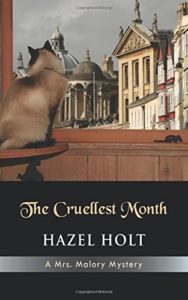 The second in the series The Cruellest Month is set at Oxford’s Bodleian Library, where Ms. Holt (no slouch) once taught.
The second in the series The Cruellest Month is set at Oxford’s Bodleian Library, where Ms. Holt (no slouch) once taught.
Turns out the author was quite the intellectual and a good friend of Barbara Pym. Ms. Holt even wrote her biography and completed one of Pym’s unfinished novels. These British authors seemed to run around in the same small circles sharing tea and scones, and probably stealing each other’s plot ideas.
Sadly Ms. Holt died in 2015, so the complete series ends after 21 mysteries. I recommend you seek out these little gems –you’ll find yourself happily whiling away an evening, turning the pages.
Click HERE to find your own little local independent bookstore to try and keep in business.
The Blackhouse by Peter May
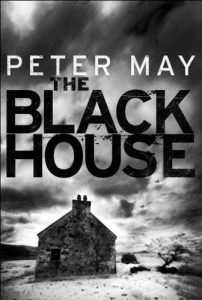 I sat up and paid attention when The New York Times Book Review (Marilyn Stasio) raved: “Peter May is a writer I’d follow to the ends of the earth.” So, of course I added this author to my TBR list.
I sat up and paid attention when The New York Times Book Review (Marilyn Stasio) raved: “Peter May is a writer I’d follow to the ends of the earth.” So, of course I added this author to my TBR list.
The Blackhouse was the final in a string of thrillers I read in a row –and, it turns out, I saved the best for last.
The Blackhouse is the first in a trilogy based in the Scottish Hebrides and featuring Edinburgh cop, Fin Macleod. Finn is sent to his childhood home on Lewis where a grisly murder on the isolated island seems to be a copy of a murder he has been investigating in Edinburgh.
Our detective is somewhat relieved to leave Edinburgh, as he grieves over the death of his young son, while half-heartily trying to prevent his marriage from crumbling.
But first a few warnings:
If you’re at all squeamish, you’ll have to tiptoe through; 1) a full and grisly autopsy, and 2) an honored, traditional, but gruesome, gannet hunt on a small island.
If you’re expecting a standard police procedural set in the unconventional Outer Hebrides, you’re happily in for more than you bargained for ~~ this thriller has depth and power.
Now that you have read the Book Barmy safety warnings, fasten your seatbelts, because you are in for a great mystery read.
Mr. May is an extraordinary writer, able to take us seamlessly between two narratives. Masterfully moving from first person to develop Fin’s story growing up on Lewis, and then the third person to tell the current day story– Fin’s broken and disillusioned adult childhood friends, the crime, and its resolution.
Mr. May has a gift for developing his characters, all of which are remarkable, but Fin is an especially likeable hero. Having the grand experience of staying in the Outer Hebrides many years ago, I can attest that he also gives the reader unbelievably lovely descriptions of the harsh life in the Outer Hebrides —  bleak, windy, and yet starkly beautiful.
bleak, windy, and yet starkly beautiful.
The plot is a compelling mix of retribution, revelations, and intrigue. The Blackhouse uses the traditional guga bird (gannet) harvest not only as a pivotal plot point, but also showcases its cultural role in the lives of the island community. Gory certainly, but informative.
High accolades for what turns out to be not only a tightly plotted thriller, but an insightful treatise on growing up, moving away, then coming home — one you thought you’d moved beyond.
From the introduction:
Three things that come without asking: fear, love and jealousy. A Gaelic proverb
And thank you Mr. May for an absolute stunner of an ending.
There are two more in the Lewis series, guess who found both at the recent library book sale – score!
An advanced readers copy was provided by Quercus via Netgalley


